Birdfinding.info ⇒ A highly localized Puerto Rican endemic that is common within its niche. Guánica State Forest houses about half of the world population and is the most accessible and reliable site. During much of the year, males can be heard calling at night along both of the roads that lead into the forest. The interior road, PR-334, is usually the best place to search because it is more sheltered from ocean breezes and closed to vehicles at night. Can sometimes be found in adjacent parts of the town of Guánica and in the hills above the beach towns of Playa Santa and La Parguera.
Puerto Rican Nightjar
Antrostomus noctitherus
Endemic to Puerto Rico, where it is locally common in the dry forest zone of the island’s southern lowlands.
Known mainly from Guánica and Susúa State Forests and the Guayanilla Hills, but occurs west to Sierra Bermeja and east to Guayama.
Originally described from a specimen taken in 1888, then otherwise unknown in life until rediscovered in 1961.
Identification
Medium-sized nightjar, very similar to Eastern Whip-poor-will, with intricately cryptic plumage and pale scapular “braces” (on the sides of the back).
Male’s outer tail feathers are broadly tipped with white (but often appears buffy—perhaps only when stained by dirt). On the female, these feathers are more narrowly tipped with buff.
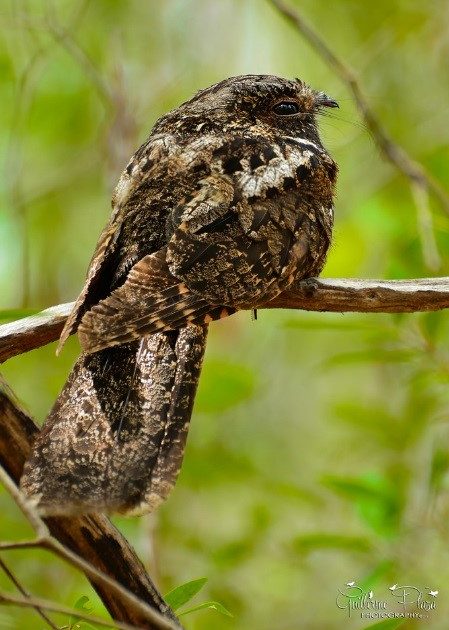
Puerto Rican Nightjar, male, showing bold pale scapular “braces.” (Puerto Rico; August 8, 2015.) © Guillermo J. Plaza
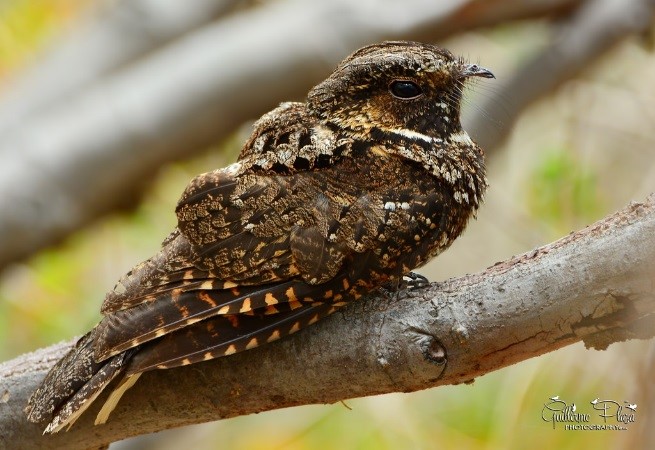
Puerto Rican Nightjar, male. (July 22, 2015.) © Guillermo J. Plaza
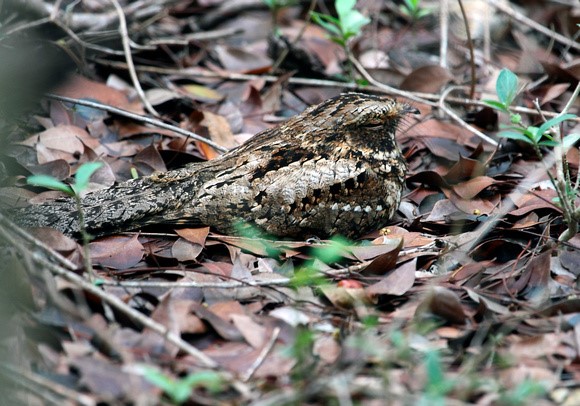
Puerto Rican Nightjar, male, with generally blackish plumage and contrasting bold pale scapular “braces.” (Puerto Rico; May 30, 2010.) © Alfredo Colón

Puerto Rican Nightjar, female, with generally rusty plumage. July 19, 2015.) © Ernesto Burgos
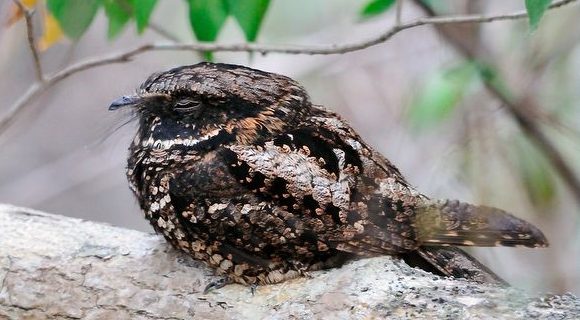
Puerto Rican Nightjar, male, with generally blackish plumage and contrasting bold pale scapular “braces.” (December 7, 2010.) © Michael J. Morel
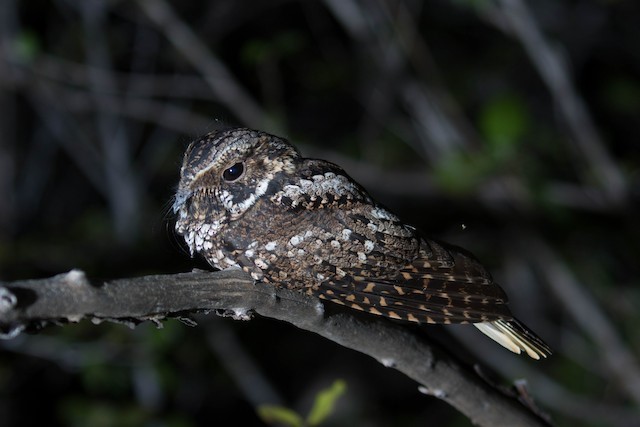
Puerto Rican Nightjar, male. (Guánica State Forest, Puerto Rico; March 12, 2016.) © Ross Gallardy
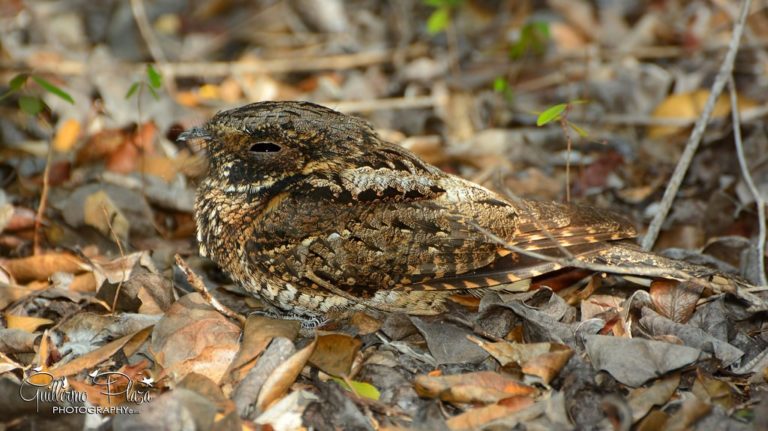
Puerto Rican Nightjar. (February 6, 2016.) © Guillermo J. Plaza
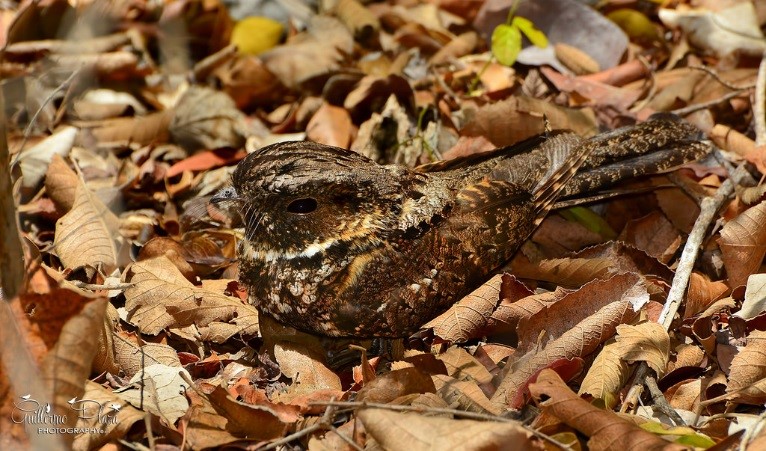
Puerto Rican Nightjar. (July 22, 2015.) © Guillermo J. Plaza

Puerto Rican Nightjar, female. (Puerto Rico; March 29, 2008.) © Michael J. Morel
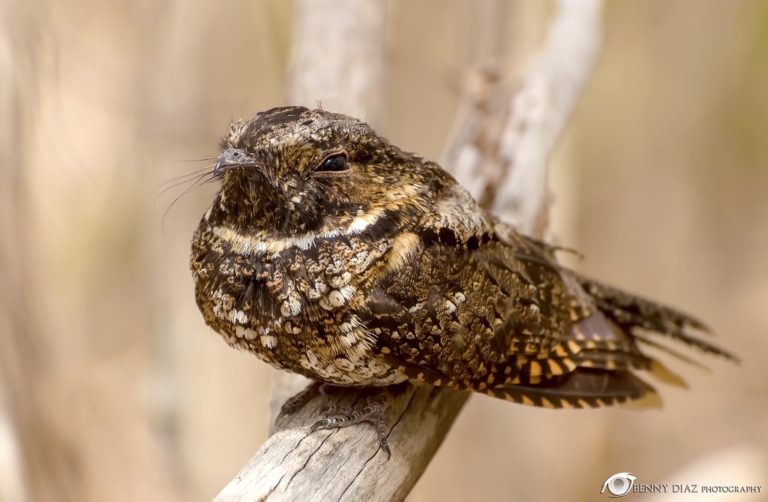
Puerto Rican Nightjar. (July 30, 2015.) © Benny Diaz

Puerto Rican Nightjar, male—note the uneven extent of the white tips on the inner and outer webs of the outermost retrices (i.e., the tail feathers most visible from below). (Guánica State Forest, Puerto Rico; March 13, 2017.) © Beth Branthaver
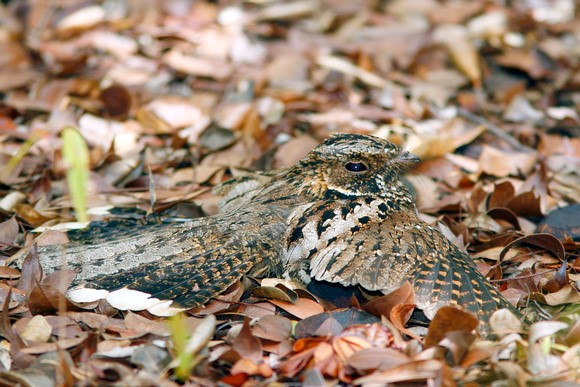
Puerto Rican Nightjar, male. (Puerto Rico; May 19, 2007.) © Alfredo Colón
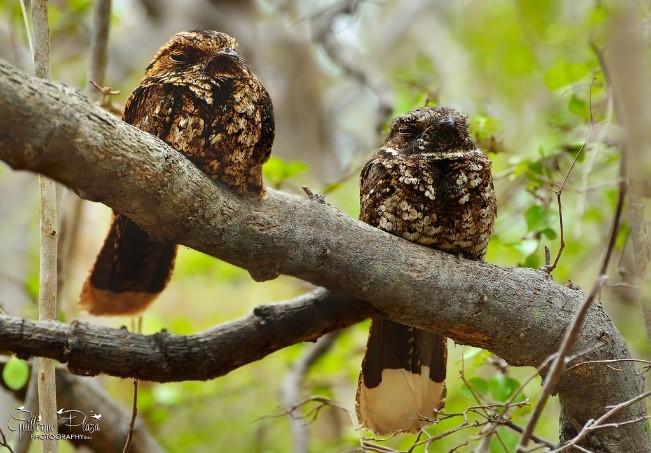
Puerto Rican Nightjar, female and male—note that the female’s pale tips form an even line, whereas the male’s pale tips are uneven. (July 22, 2015.) © Guillermo J. Plaza
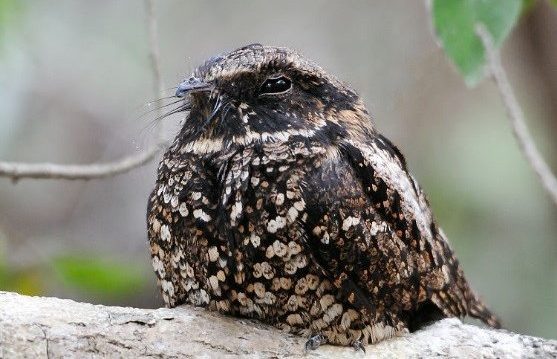
Puerto Rican Nightjar, male. (December 7, 2010.) © Michael J. Morel

Puerto Rican Nightjar, female. (December 7, 2010.) © Michael J. Morel
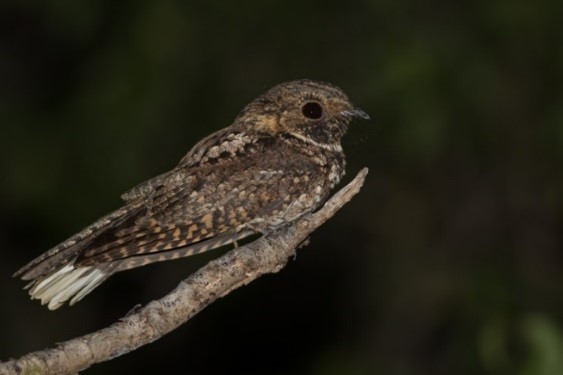
Puerto Rican Nightjar, male. (Guánica State Forest, Puerto Rico; March 21, 2016.) © Tom Johnson
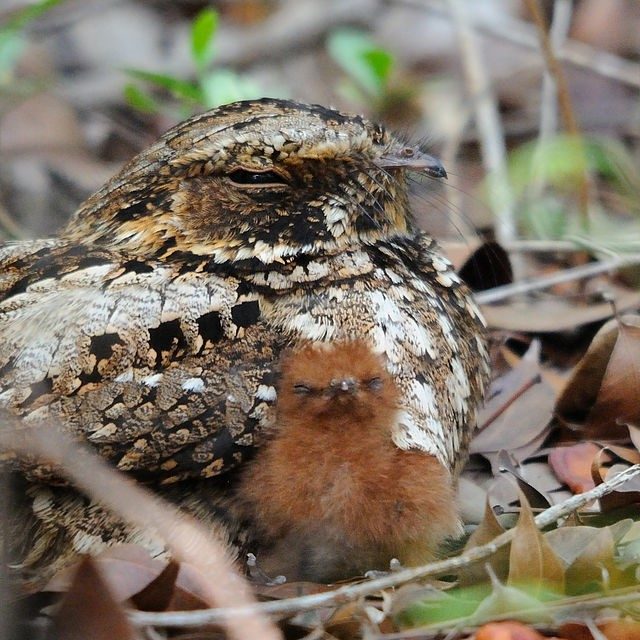
Puerto Rican Nightjar, adult with chick. (June 8, 2010.) © Michael J. Morel

Puerto Rican Nightjar, male. (Cuevas El Convento Natural Protected Area, Guayanilla, Puerto Rico; May 21, 2016.) © Manuel Seda

Puerto Rican Nightjar, fledgling. (June 27, 2010.) © Michael J. Morel
Voice. Song is a series of quavering whip! notes, often paired: A singing bird often goes on at length, with no apparent pattern.
Cf. Chuck-will’s-widow. Puerto Rican Nightjar is most likely to be confused with the much larger, rustier Chuck-will’s-widow, which occurs on Puerto Rico from September to April. In addition to being much smaller, male Puerto Rican is readily distinguished by large white outer tail patches—male Chuck-will’s-widow has white on the inner webs of its outer tail feathers. Females of the two species lack clear distinguishing features apart from the size difference.
Cf. Eastern Whip-poor-will. Puerto Rican Nightjar is extremely similar to Eastern Whip-poor-will. Puerto Rican averages smaller, but there is overlap in their measurements. The two species are not known to overlap in range, but the Whip-poor-will could potentially occur on Puerto Rico in winter. If so, the males would be distinguishable by voice or by the amount of white in the tail—on the Whip-poor-will, the three outer tail feathers are almost entirely white, whereas on Puerto Rican the white covers about 30-40% of these feathers. Females may be indistinguishable except possibly by a close study of the camouflage pattern.
Notes
Monotypic species.
IUCN Red List Status: Endangered.
References
BirdLife International. 2016. Antrostomus noctitherus. The IUCN Red List of Threatened Species 2016: e.T22689809A93248623. http://dx.doi.org/10.2305/IUCN.UK.2016-3.RLTS.T22689809A93248623.en. (Accessed September 14, 2017.)
Cleere, N., and D. Nurney. 1998. Nightjars: A Guide to Nightjars and Related Nightbirds. Pica Press, Sussex.
eBird. 2018. eBird: An online database of bird distribution and abundance. Cornell Lab of Ornithology, Ithaca, N.Y. http://www.ebird.org. (Accessed October 26, 2018.)
Raffaele, H. 1989. A Guide to the Birds of Puerto Rico and the Virgin Islands. Princeton University Press, Princeton, N.J.
Raffaele, H., J. Wiley, O. Garrido, A. Keith, and J. Raffaele. 1998. A Guide to the Birds of the West Indies. Princeton University Press, Princeton, N.J.
Vilella, F.J. 2010. Puerto Rican Nightjar (Antrostomus noctitherus), version 1.0. In Neotropical Birds Online (T.S. Schulenberg, ed.). Cornell Lab of Ornithology, Ithaca, N.Y. https://doi.org/10.2173/nb.purnig1.01. (Accessed July 11, 2018.)
